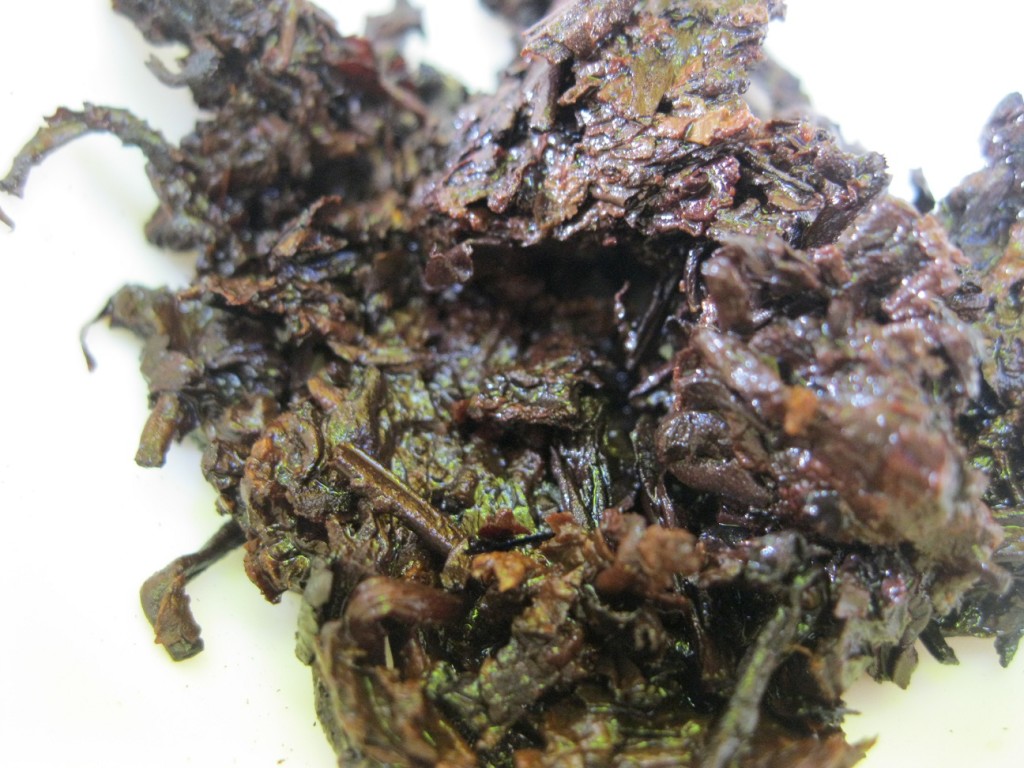’06 Langhe Tuo Part II

A better than decent ripe puerh must have depth. Ripe puerhs made from average quality leaves lack soul. It gives a taste of blah in the mouth. Langhe is known for a particularly light fermentation style. But for a few Langhe minis that I’ve tasted from the Chawang Shop, there isn’t much by way of earthiness. They have a very clean style that can possess some of the tannins and taste of chocolate. The higher grade Imperial Round had a taste of common hongcha, that is something like a keemun or a other common Irish breakfast tea from India.
The tannic productions, like the beautiful ’06 Peacock Tribute and the ‘07 Menghai Round, could probably benefit from a stint of good ole wet-storage. Just one summer in humid storage has done wonders for the Menghai Round, though it remains on the tannic and dry side. The ’11 Imperial Round was so “raw” right now that it tasted like a harsh black tea… probably the most beautiful liquor that I’ve ever seen in a puerh, considerably lighter than any other. It was exceptional but not at the end of the spectrum I preferred. A more detailed note on that is forthcoming.
Which brings us back to the ’06 Menghai Bird’s Nest, which is ready for drinking now. Don’t get me wrong, it is still a moving target but the target seems to be moving toward a better and better product. When I first got it, I was struck by its umami. That’s the taste sensation that is supposed to be evoked when eating mashed potatoes. This is an interdimensional sensation that arrives when a cake is fermented and stored well. The bad fermentation tastes icky like a dank basement. Some people love it. The good fermentation is one where you taste a microbial action that goes beyond just that which occurs in the process of oxidation. These tend to be rare.
Along with umami, the taste of anise was quite apparent. Presently, the depth is present but umami doesn’t come to tongue. The taste of anise is less apparent as well, with sweet notes prevailing and most distinguishing explosive camphor finish, which lingers for at least a good three minutes. I’ve had two other such distinguishing camphor tasting ripes. A gift from the Tong Ren herb shop in London and a maocha sample from White2Tea. The latter, lost its kick the second time I visited it. The same could be said for the ’10 Imperial Palace. At one moment it possessed great camphor sensation, then it didn’t. I still haven’t been able to put my finger on factors shaping the expression of camphor and its relative relation to the quality of the tea or the relationship of storage and humidity to its expression. Stay tuned.
